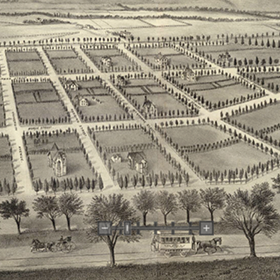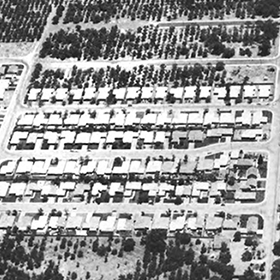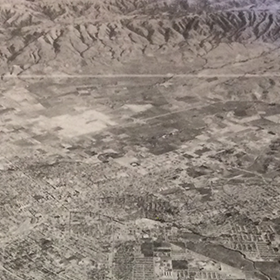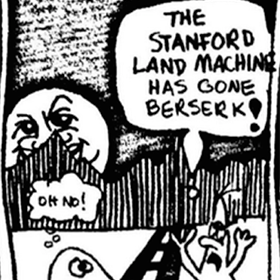Stories
The Topics section is still in-progress and will include interactive extensions of topics and dissertation chapters as they are completed. Check back to my blog for future updates or follow me on Twitter.

Pastoral Memories and the Origins of the Countryside Landscape
The Santa Clara Valley's rich alluvial soils and Mediterranean climate made it an ideal location for farming. Spanish missionaries established the Valley's early agricultural presence in the 1700s, and until the 1960s agriculture remained the dominant economic activity of the valley. The history of the farms, ranches, and orchards that once covered the valley's floor faded from the physical landscape, but emerged as a popular memory on the imagined landscape.

A Home in the Countryside
The memory of the valley's agricultural landscape persisted through the suburbanization of the San Francisco Peninsula. The allure of the valley's climate and natural surroundings became a major draw for post-war suburbanites seeking jobs in the new high technology sector burgeoning throughout the Peninsula. An expectation of living among the orchards formed an important component of how residents thought about nature in their communities.

"Carved from a Forest of Fruit Trees": City Annexations and Environmental Limits · coming soon
Many municipalities in the Bay Area underwent aggressive expansion in the postwar years, but none more so than San Jose. Under the tenure of City Manager Dutch Hamann, San Jose grew from seventeen square miles to 134 square miles in twenty years. But in the process, the annexations and rapid urban growth introduced environmental problems the city failed to anticipate.

"The Stanford Land Machine has Gone Berserk!" Stanford University and the Stanford Industrial Park · coming soon
Stanford University is the largest landholder on the San Francisco Peninsula, controlling nearly 9,000 acres stretching from Palo Alto up until the Santa Cruz Mountains. In the 1950s, Stanford started acting as a real estate developer, first with the establishment of the Stanford Industrial Park in 1953 and later through several additional land development programs. These programs, however, ran into conflict with surrounding neighborhoods whose ideas for the land did not include industrialization.